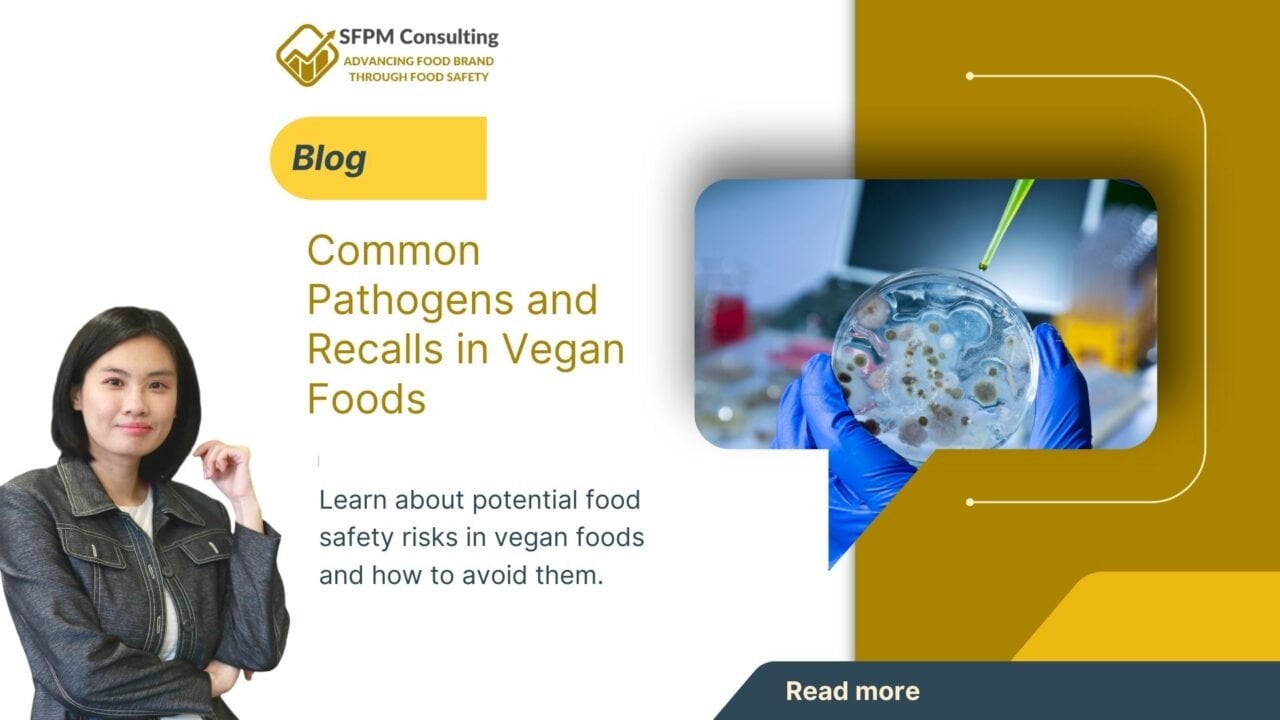Food safety is a critical aspect of any diet, including a vegan one. While vegan foods are generally perceived as healthier and safer than animal-based products, it’s essential to be aware of potential risks associated with pathogens that can contaminate plant-based foods.
In recent years, there have been several instances of recalls of vegan products due to the presence of harmful pathogens.
In this blog post, we will explore some common pathogens found in vegan foods, discuss the reasons behind these contaminations, and provide tips on how to minimize the risk of exposure.
What are the Common Pathogens found in Vegan Food?
One of the well-known pathogens that can contaminate vegan foods is E. coli. This bacterium is typically found in feces and can be transmitted to fruits, vegetables, and grains through contaminated water, soil, or improper handling.
E.coli outbreaks have been linked to various vegan products such as leafy greens, sprouts, and fresh herbs (CDC, 2021 – E.coli).
Another common pathogen that can affect vegan foods is Salmonella. This bacterium is often found in raw fruits and vegetables, as well as nuts and seeds. Salmonella contamination can occur during the growing, harvesting, or processing stages of food production (CDC, Salmonella 2024).
Listeria monocytogenes is a pathogen that can thrive in cool, damp environments and is often associated with ready-to-eat vegan foods such as salads, sandwiches, and dips (CDC, Listeria 2024).
How do Vegan foods get contaminated?
So, why do vegan foods sometimes get contaminated with these harmful pathogens? There are several factors that can contribute to the presence of pathogens in plant-based products.
One common reason is improper handling and storage practices during production, transportation, or at home. Cross-contamination can also occur if vegan foods come into contact with surfaces, utensils, or equipment that have been in contact with raw uncooked contaminated ingredient.
Additionally, poor sanitation in food processing facilities, inadequate cleaning of equipment, and irrigation water contaminated with fecal matter can all contribute to the spread of pathogens in vegan foods.
To minimize the risk of contamination, it’s essential to follow good hygiene practices such as washing fruits and vegetables thoroughly before consumption, and storing perishable items properly in the refrigerator.
Recalls of Vegan Food
In recent years, there have been several recalls of vegan products due to pathogen contamination. For example, there have been recalls of packaged salads contaminated with E.coli, nut butter products contaminated with Salmonella, and hummus products contaminated with Listeria.
These incidents highlight the importance of food safety measures in the production and handling of vegan foods to prevent outbreaks and protect consumers’ health.
To minimize the risk of exposure to pathogens in vegan foods, consumers can take several precautions:
- purchase products from reputable brands and suppliers that follow strict food safety protocols -practice proper food handling and storage techniques at home
- stay informed about food recalls and warnings issued by regulatory agencies such as the Food and Drug Administration (FDA) and CFIA (Canadian Food Inspection Agency)
By staying vigilant and proactive, consumers can help reduce the risk of foodborne illnesses associated with vegan products and contribute to a safer food supply chain.
While vegan foods are generally considered safe and nutritious, it’s important to be aware of the potential risks of pathogen contamination. By understanding common pathogens found in vegan products, consumers can take steps to minimize these risks and protect their health.
Practicing good food safety habits, staying informed about recalls, and supporting brands that prioritize food safety can all help ensure the safety and integrity of vegan foods in the market.
References:
- Centers for Disease Control and Prevention.2021). E coli. Retrieved from https://www.cdc.gov/ecoli/index.html
- Centers for Disease Control and Prevention. (202). Salmonella. Retrieved from https://www.cdc.gov/salmon/index.html
- Centers for Disease Control and Prevention. (1). Lister. Retrieved from https://www.cdc.gov/listeria.html

